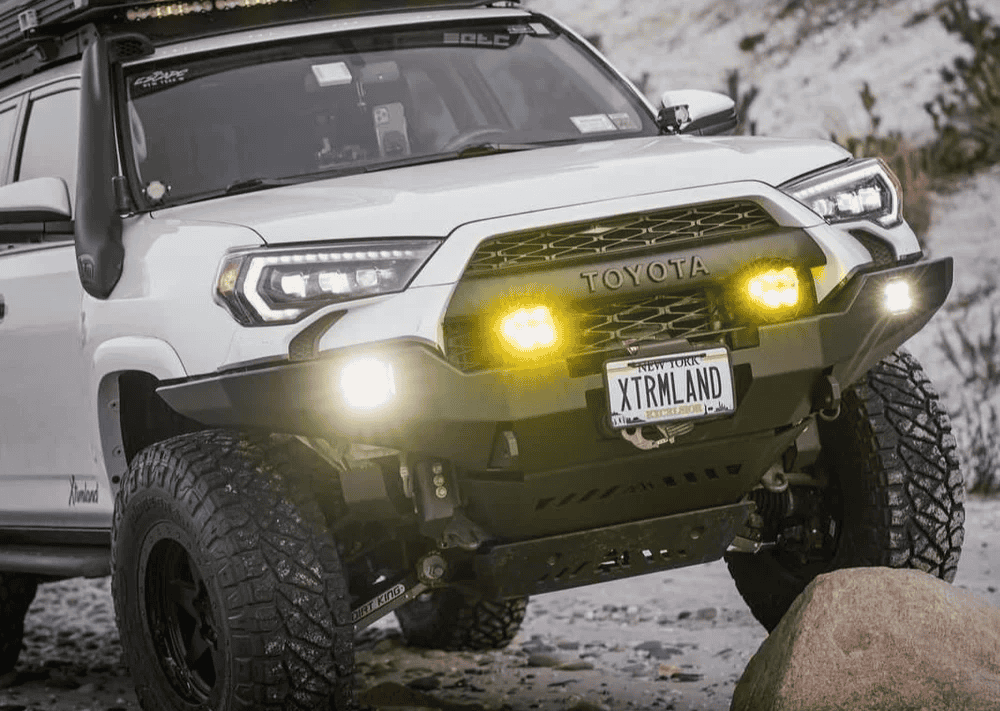Overland Vehicles

An overland truck lives at the intersection of range, reliability, and comfort. Start with payload math. Tents, water, fuel, food, fridge, drawers, recovery tools, and passengers add up fast. Know curb weight, gross vehicle weight rating, axle ratings, and tire load index so the setup stays within safe limits. A balanced build keeps weight low and centered to reduce sway and braking distances on gravel and washboard.
Tire choice drives capability. All terrain patterns offer a quiet ride and confident traction in mixed conditions while mud terrain options claw through clay and deep ruts at the expense of road noise and fuel. Size up only if gearing, brakes, and fender clearance can support it. Air down on loose surfaces to increase the contact patch, then air up before pavement using a reliable compressor.
Suspension is about control, not just ride height. Quality shocks resist fade on corrugated roads. Springs or helper systems should match your real rolling weight, not a catalog estimate. A mild lift with correct alignment can clear tires while keeping steering geometry predictable. Add armor where needed, but avoid bolting on heavy steel everywhere if you do not visit those hazards. Weight is a tax paid every mile.
A comfortable camp routine makes multi day travel enjoyable. For power, many travelers pair a lithium battery with a DC to DC charger and a compact solar array. This keeps fridges cold and devices charged when parked for days in the shade. Size your battery for real consumption so you do not run short after a cloudy stretch.
Water planning shapes route options. Two to four gallons per person per day is a reliable estimate when cooking and washing. Hard mounted tanks ride low and safe while jerry cans offer flexibility and easy refills. A simple inline filter and a compact pump create a clean dish station that saves time and effort.
Storage should be quiet, secure, and easy to reach. Drawer systems keep tools and kitchen kits organized. Soft bags compress into tight corners for clothing and bedding. Place heavy spares and recovery items near the cab to protect the rear axle and reduce bounce on rough tracks. A tidy camp breaks down faster which keeps you fresh for the next leg.
Redundant navigation prevents wrong turns that burn daylight. Pair offline topo maps with a satellite communicator for messaging and emergency use when out of cell coverage. Learn how to load routes and waypoints and always carry a paper map as a backstop.
Aired down tires, traction boards, a quality jack, and a rated tow strap solve most common stuck scenarios. Practice in safe conditions so you know the flow before a trail demands it. Never crawl under a vehicle supported only by a jack.
Long dirt sections can be deceptive. Track fuel burn at trail speeds and consider a small reserve. A bed mounted can or a larger tank extends range, but verify weight and mounting safety.
Seasons change the plan north of the border. Winter conditions arrive early and linger in many provinces, so a four season approach means proper tires, cold rated sleeping systems, and protected water lines. The phrase overland truck camper Canada often points to rigs that handle long forest roads and remote crown land with limited services. Expect bigger distances between stations and carry a conservative fuel and water reserve.
Know land use rules. Provincial parks, national parks, crown land, and forestry areas each have distinct regulations and permits. Learn bear safety, store food correctly, and carry bear spray where allowed. In coastal and mountain regions, rain management matters as much as insulation. Ventilated shelters, quick dry layers, and a dedicated wet gear bin keep the cab comfortable.
Border crossings favor clean, well documented setups. Declare food, fuel containers, and outdoor gear as required. Drones, knives, and certain sprays have restrictions, so check current guidance well before the trip.
Forest service roads vary from smooth gravel to rutted climbs. Plan for slower travel speeds and scout unknown sections by foot if visibility is limited. Report conditions when you can to help the next traveler.
Follow leave no trace principles. Use existing sites, pack out trash, and minimize fire impact. A small shovel, ash management, and a spark arrestor help prevent accidents during dry spells.
Mountain weather changes quickly. Carry extra layers and a secondary heat source that is safe for enclosed spaces. A simple wind study can decide which side of the truck shelters your kitchen.
If your notes are now a checklist, you are close to a capable plan. When it is time to transform a platform into a reliable traveler, look at proven approaches to suspension, power, storage, and protection. See how our team approaches design on our page for custom overland rigs. For focused packages and detail work that match your routes and weight targets, explore our custom overland upfit. If you want to understand our process and standards before you commit, read why choose OZK Customs.
We build for people who want a truck that starts every morning and rolls quietly down backroads without surprises. Tell us where you are headed, what you carry, and how many nights you spend off grid. We will map a build that balances comfort, safety, and performance so your overland truck camping trips feel effortless from the first mile.
Ready to turn plans into a capable overland truck that handles rough tracks and long miles. Share your goals in the form and our team will map a build plan, timeline, and budget to match your routes and season. Let us craft a rig you trust on day one.
ADDRESS:
6159 E Huntsville Rd, Fayetteville, AR 72701
PHONE:
(479) 326-9200
EMAIL:
info@ozkvans.com